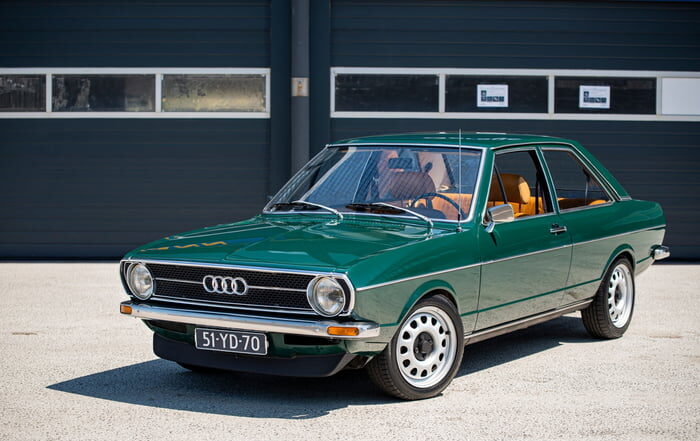A company like Audi has innovation running through its veins. Some significant changes in the automotive industry can be attributed to Audi. Their products are frequently basic, executive, and subtle. They are the quiet Germans in the world of showy Mercedes and BMWs. They are defined by their degree of usefulness and general suitability as a daily family vehicle. The Audi 80 defined what people thought of as an Audi. Later succeeded by the best-selling A4, the 80 was the platform that started it all.
Background
In 1972, the Audi 80 made its premiere in Europe. A year later, it was released in Australia and North America as the Audi Fox. It was initially offered as a two-door or a four-door sedan. It effectively replaced a number of Audi’s retired models and gave the brand a viable rival to the Opel Ascona, Ford Taunus and Ford Cortina in the UK. Because of the persistent post-war mentality, cars had to be built with a lifetime of usage in mind.
The platform was labeled B1, and the B1 Audi 80 became the second modern-era Audi created under full Volkswagen Group ownership. There were two different engine options: a 1.3-liter variant with 54–59 HP and a 1.5-liter option with 74–84 HP. Two- and four-door saloons with the base trim classifications of Audi 80 and 80 S were offered in Germany. The sportier 80 GT, a two-door only vehicle with a 100HP 1.6-liter carburetor engine was offered by Audi in late 1973. McPherson struts and other cutting-edge suspension parts were included as standard equipment on the Audi 80 to go with the engine.
Years in production– 1972 to 1978
The Design
The extremely lightweight Audi 80 impressed customers with its sporty handling and low consumption, making it the right car at the right time at the start of the 1973 oil crisis. The Head of Technical Development Kraus strictly wanted a lightweight construction and thus the standard two-door vehicle weighing only 835 kilograms was manufactured. He designed the automobile to be incredibly small. Negative steering roll radius, a solution that considerably enhances stability when braking, was adopted for the first time in a mass-produced European car by suspension engineer Detlef Banholzer.
Audi prioritizes the security of its passengers and other road users with the hydraulic braking system’s diagonal design. A torsion crank axle with spring dampers serves to be the rear suspension. McPherson struts and wishbones are used to control the front wheels. The Audi 80’s four-speed transmission is located behind the driving front axle, and the engine is positioned lengthwise in front of it.
Top Specifications of Audi 80
- Displacement – 1588 cm3
- Power – 100 Hp @ 6000 rpm.
- Torque – 131 Nm @ 4000 rpm.
- Transmission – 4-speed manual
- Top speed – 175 km/h
- Kerb weight– 855 kg
- Wheelbase– 97.24 inches
Interesting facts
- The 80 won the “Car of the Year” title in 1973 ahead of the Renault 5 and the Alfa Romeo Alfetta.
- The Audi 80 also won over the international trade press.
Fascinated by old Stars. You have reached your destination. At CLcompany we have curated pictures, write-ups, and more about the legendary journey of Cars. If you are looking to share your thoughts on Classic Cars, do check out writer’s section on CLcompany website.
Share the passion with the world.

